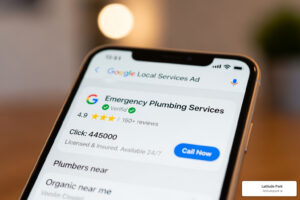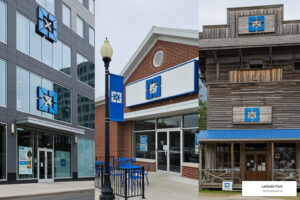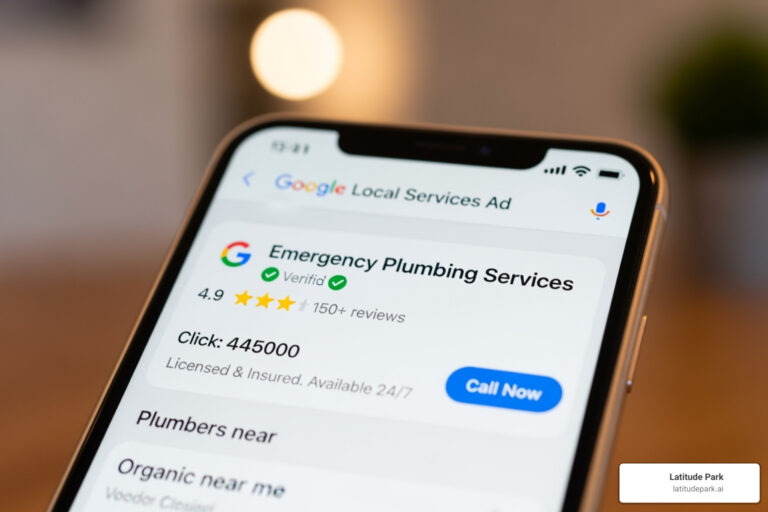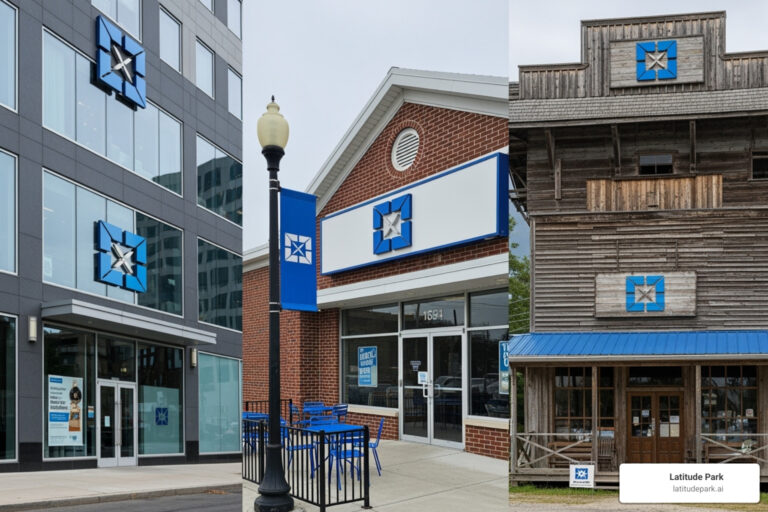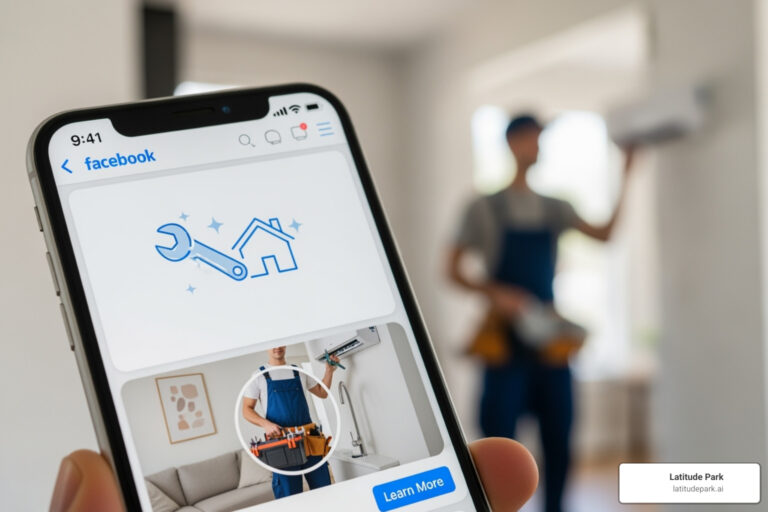Why Multi-Location Marketing is Critical for Franchise Success
Multi location marketing is a strategy for businesses with multiple physical locations to promote their brand consistently while adapting to local market needs. It requires balancing brand uniformity with the flexibility to connect with diverse local audiences.
Key Components of Multi-Location Marketing:
- Brand Consistency – Maintaining uniform messaging, visuals, and customer experience across all locations
- Local Adaptation – Customizing campaigns to fit regional preferences, demographics, and cultural nuances
- Centralized Management – Coordinating campaigns from headquarters while empowering local teams
- Performance Tracking – Monitoring analytics at both corporate and individual location levels
Getting this right is critical: 98% of consumers used the internet to find local business information in 2022, making a strong online presence essential for driving foot traffic. Mastering this strategy yields significant benefits, including improved brand awareness, cost-effectiveness, better ROI from local campaigns, and improved customer experiences.
The core challenge is striking the perfect balance between maintaining your brand’s integrity and connecting authentically with local markets. Too much standardization and you miss local opportunities; too much local freedom and your brand becomes fragmented.
I’m Rusty Rich, President and founder of Latitude Park, a digital advertising agency specializing in multi location marketing for franchises since 2009. Over the past 15 years, I’ve helped countless franchise brands build scalable marketing systems that drive measurable growth while maintaining brand consistency.
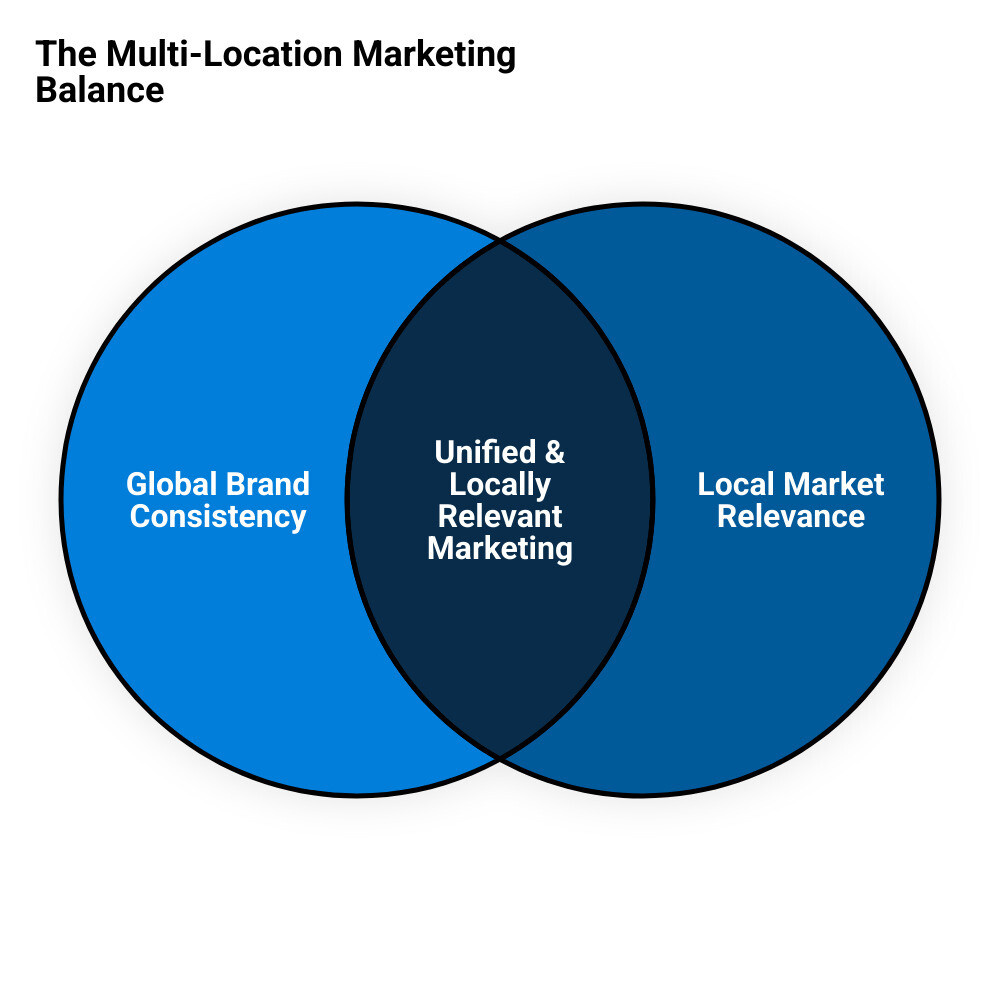
The Foundations of a Winning Multi-Location Marketing Strategy
A successful multi location marketing strategy requires a solid foundation. For businesses with multiple storefronts, this approach presents a significant opportunity to impact different markets, but it also comes with unique challenges that single-location businesses don’t face.

Getting your strategy right yields remarkable benefits. Increased brand awareness emerges from coordinated efforts across all locations. Cost-effectiveness comes from centralized management and economies of scale, leading to smarter spending. This efficiency boosts improved ROI as targeted local campaigns resonate better with each community. Most importantly, you’ll see a dramatic improvement in customer experience, as consistent quality builds loyalty and trust. The power of consistent branding across franchise locations is transformative for businesses ready to scale.
Balancing Brand Consistency with Local Relevance
The core challenge is balancing brand consistency with local relevance. Your brand must look, sound, and feel the same everywhere while connecting authentically with local communities. Start with a comprehensive marketing playbook that details brand guidelines, from voice and tone to approved imagery. This playbook ensures every location stays aligned with your core identity.
Combine this centralized strategy with smart local customization. Provide flexible templates for assets instead of granting complete creative freedom, which can lead to brand fragmentation. For example, a pizza franchise can use a national promotional template, but the Chicago location can feature local staff while the Miami store highlights its outdoor seating. This creates a cohesive brand experience that customers trust, forming the foundation of consistent franchise branding excellence.
Leveraging Data and Analytics for Optimization
In multi location marketing, data is essential for understanding what works and where. A data-driven approach helps businesses outperform competitors. Centralized data management is non-negotiable; you need a system that consolidates performance information from all locations into a single dashboard.
Tracking location-level KPIs reveals trends in consumer behavior, like which channels perform best in different regions. This allows you to A/B test local offers and tailor campaigns to market demographics. For instance, a college town location might benefit from late-night social media ads, while a suburban store could see more success with weekend email campaigns. By identifying top-performing locations and replicating their successful tactics, you can transform your marketing from guesswork into a science. This is the foundation for dynamic content and data-driven marketing that drives real results.
Essential Digital Channels for Local Domination
A strong digital presence across multiple channels is essential for multi-location marketing. Customers need to find you easily, whether through search engines, social media, or paid ads. The key is to ensure all these digital doors are open and welcoming.
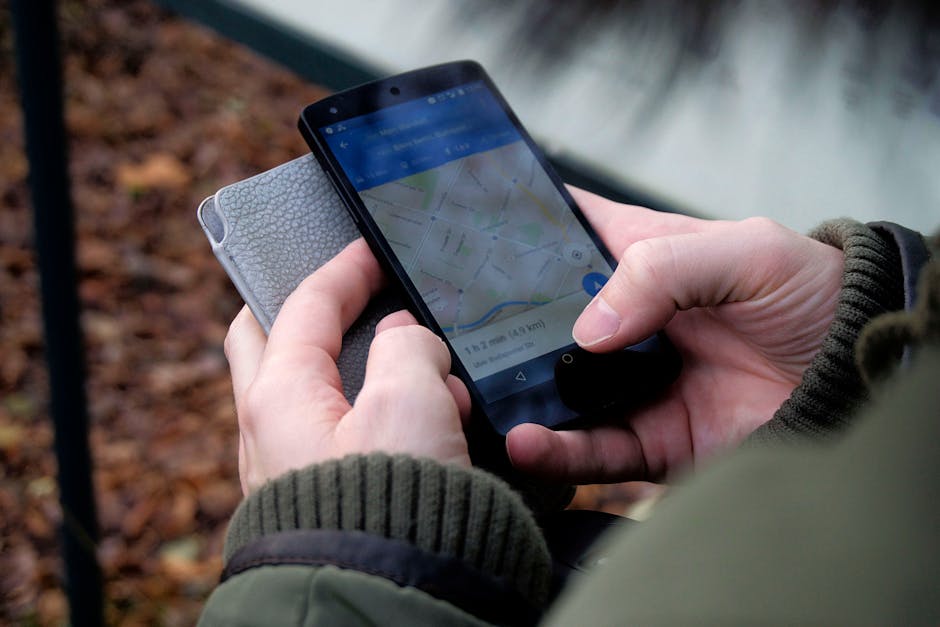
The channels that drive the most local engagement are Local SEO, Paid Advertising, Social Media, Reputation Management, and Content Marketing. Let’s explore how to optimize each for your multi-location business.
Mastering Local SEO for Your Multi-Location Business
Local SEO is the backbone of a successful multi-location marketing strategy. If customers can’t find you in “near me” searches, they’ll go to your competitors. The foundation is creating separate, optimized landing pages for each location. Each page should feature its unique Name, Address, and Phone number (NAP), local staff bios, community testimonials, and a Google Map. Use location-specific keywords in title tags and meta descriptions.
Your Google Business Profiles are your most important local SEO asset. Each location needs its own complete, accurate, and updated profile. NAP consistency is crucial; your business name, address, and phone number must be identical across all online directories like Yelp and Bing Places. Finally, build local authority by acquiring links from community organizations and local blogs.
For deeper insights, see our guides on “Why Local Business Listing is Essential” and “On-Page SEO Tactics for Multi-Location Brands”.
Driving Foot Traffic with Geo-Targeted Paid Advertising
While SEO builds a long-term foundation, paid advertising drives immediate traffic. For multi-location marketing, geo-targeting turns ad spend into a precision tool. Google Ads, Facebook, and Instagram ads allow you to target specific demographics, interests, and behaviors within precise geographic boundaries around each location.
This precision ensures every dollar drives qualified local traffic. The key is to create local ad copy and direct users to custom landing pages for each location, providing relevant information instantly. Learn more in our articles on “Digital Advertising for Multi-Location Businesses” and “Meta Campaigns for Franchise Growth”.
Engaging Communities with Localized Social Media and Content
Social media for multi-location marketing is about becoming part of each local community, not just broadcasting one message. Each location should have its own social media presence to foster genuine connections. Create content that speaks to local interests, such as featuring staff, promoting local events, or running community-specific promotions.
User-generated content is also powerful; encourage customers to share photos from their visits using location-specific hashtags. Active community management is vital. Responding quickly and helpfully to comments, messages, and reviews on each local page builds strong relationships. The goal is to balance brand consistency with local personality. Centralized tools can provide approved templates and assets, giving local teams the freedom to customize content for their audience.
For more strategies, explore our guides on “Multi-Location Social Media Marketing” and “Reputation Management”.
Overcoming Common Multi-Location Marketing Challenges
Managing marketing for multiple locations is complex. Common challenges include communication breakdowns between corporate and local teams, difficult budget allocation across diverse markets, skillset variances among local managers, and inconsistent messaging. However, with the right systems, these challenges can be turned into competitive advantages.

Streamlining Communication and Collaboration
Poor communication is a common frustration, but it’s often due to a broken system, not difficult managers. To fix this, establish centralized marketing platforms as a single source of truth for assets, guidelines, and requests. Shared asset libraries are crucial, providing all locations with up-to-date logos, photos, and templates, preventing off-brand creations.
Hold regular meetings for two-way feedback, where corporate shares successes and local managers provide market insights. Finally, define clear roles: corporate handles strategy and brand guidelines, while local teams focus on execution and community engagement. This division of labor is key to smooth operations. Our guide on “Franchise vs. Corporate Marketing: How to Balance Brand and Local Strategy” explains this further.
Smart Budgeting and Resource Allocation
Allocating marketing dollars fairly and effectively across diverse locations is a major challenge. Instead of a one-size-fits-all approach, use data-driven budgeting. Analyze each location’s performance, market competition, and growth potential to direct funds where they’ll have the most impact.
Co-op funds, where corporate contributes to local marketing efforts, can pool resources while maintaining brand consistency. Performance-based allocation allows you to shift resources dynamically based on what’s working, maximizing ROI across the network. For example, you can adjust budgets to favor Facebook ads in one market and local events in another. Stay flexible and review performance regularly to ensure every marketing dollar is optimized. For more strategies, see our guide, “Franchise Marketing Budget Tips”.
Advanced Tactics and Agency Support
Once your foundations are solid, advanced tactics can lift your multi-location marketing. These strategies focus on building authentic community connections and leveraging specialized expertise. They include using local influencers, event marketing, SMS marketing, and strategic agency partnerships. These tactics work with your foundational strategies to amplify reach and deepen customer relationships.
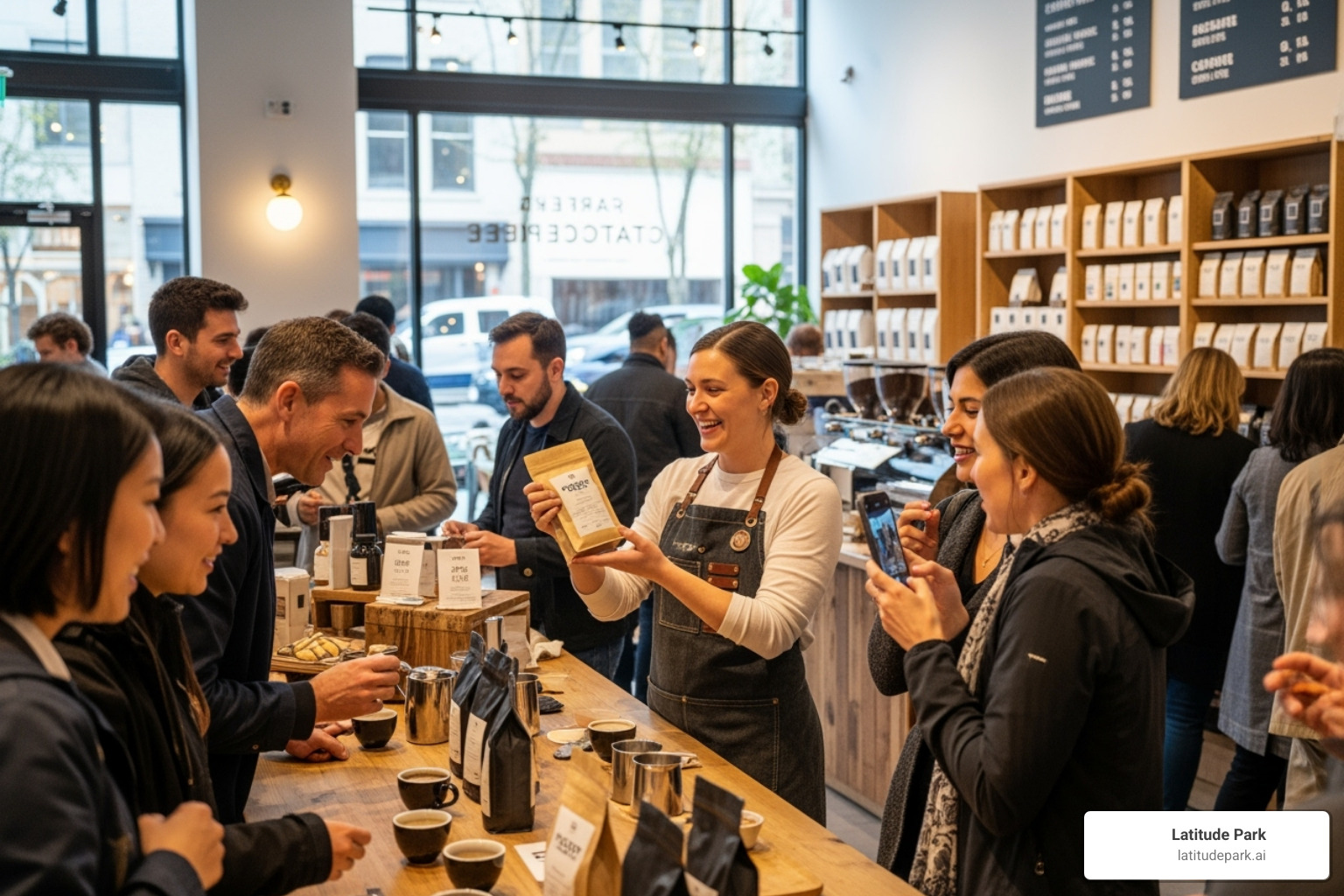
Building Trust with Local Influencers and Events
Since 69% of consumers are likely to trust a friend, family member, or influencer recommendation over messaging that comes directly from brands, local influencers and community involvement are crucial for multi-location marketing. Local influencers aren’t celebrities; they are trusted community figures like a popular yoga instructor or a local food blogger. The key is to identify local partners who align with your brand values and connect with your target audience.
Community involvement builds further authenticity. Host in-store events like workshops or classes, or secure sponsorships of local teams and festivals to position your brand as an invested community member, similar to how the Home Depot Foundation builds connections. Also, use SMS marketing to promote these local events and offers, as it’s highly effective for time-sensitive announcements.
How a Marketing Agency Can Lift Your Strategy
Managing multi-location marketing grows more complex with each new location. Partnering with a specialized agency like Latitude Park can be a game-changer. An agency acts as an extension of your team, providing strategic development that aligns with your business goals. This includes defining brand positioning, identifying target audiences, and crafting messaging that balances brand consistency with local relevance.
We also provide centralized execution for heavy-lifting tasks like local SEO, geo-targeted paid ads, social media management, and reputation monitoring for every location. Our advanced reporting provides clear, actionable insights into each location’s performance, showing what drives foot traffic and where marketing dollars are most effective. Our expertise in creating custom campaign structures, especially with Meta advertising, ensures scalability as your business grows from 10 locations to 1,000. A specialized agency brings the expertise, efficiency, and scale needed to drive consistent growth.
If you’re considering a partner, see our guide on “How to Choose the Best Social Media Marketing Agency”.
Frequently Asked Questions about Multi-Location Marketing
Here are answers to the most common questions we receive about multi-location marketing.
How do you create localized content without sacrificing brand identity?
The key is using centrally-approved templates that allow for local customization. Corporate provides the foundation (core message, visual style, brand voice), while local teams add community-specific details. For example, a Denver location might feature a local marathon it’s sponsoring. Focus on relevant local events, and feature local staff or customers in your content. This ensures everything remains on-brand while feeling personal to the local community.
What’s the first step to take when starting a multi-location strategy?
The first step is to conduct a thorough audit of all current locations. Start by ensuring your Name, Address, and Phone number (NAP) are consistent across all online listings, from Google Business Profile to Yelp. Even minor inconsistencies can hurt your search rankings. Next, audit each location’s social media presence and past marketing efforts. This audit creates a baseline, revealing what’s working, what’s broken, and where your biggest opportunities are. This data is essential for building a unified strategy that addresses real-world issues.
How do you measure the ROI of a multi-location campaign?
Measuring ROI requires tracking location-specific KPIs. Key metrics include website traffic from local search, in-store foot traffic (using tools like Google Store Visits), local lead form submissions, coupon redemptions, and phone calls from local pages. For paid ads, monitor local conversions and cost-per-acquisition for each market. Compare these metrics against the marketing spend for each location to determine your true ROI. This granular approach allows you to identify top-performing locations, replicate their success, and optimize your budget effectively.
Conclusion
Successful multi-location marketing requires a new playbook, one that balances brand consistency with authentic local connection. The key is a centralized strategy that provides a solid brand foundation, combined with the local flexibility to connect with each community’s unique culture.
This guide covered the essentials: creating strong brand guidelines, mastering local SEO, and using geo-targeted advertising. A data-driven approach is critical for understanding what makes each community tick. While challenges like communication breakdowns and budget constraints are real, the right systems turn them into manageable steps. The true power of this strategy lies in building authentic community connections through local events, sponsorships, and partnerships.
At Latitude Park, we’ve spent over 15 years perfecting these strategies for franchises. Our approach combines the efficiency of centralized management with the personal touch that builds local loyalty. The future belongs to brands that are both global and local, and your business has the unique advantage of scale and community presence. Explore our comprehensive franchise marketing services to ensure your brand thrives everywhere.

